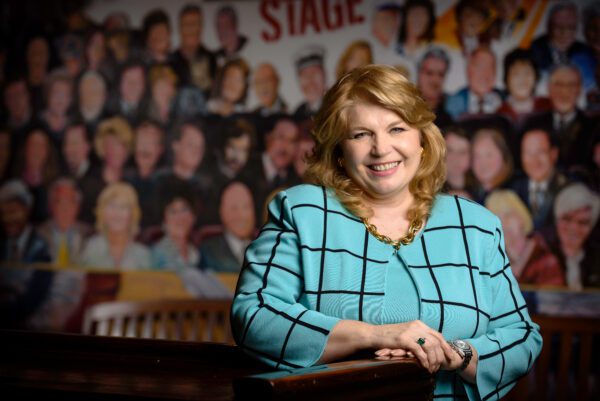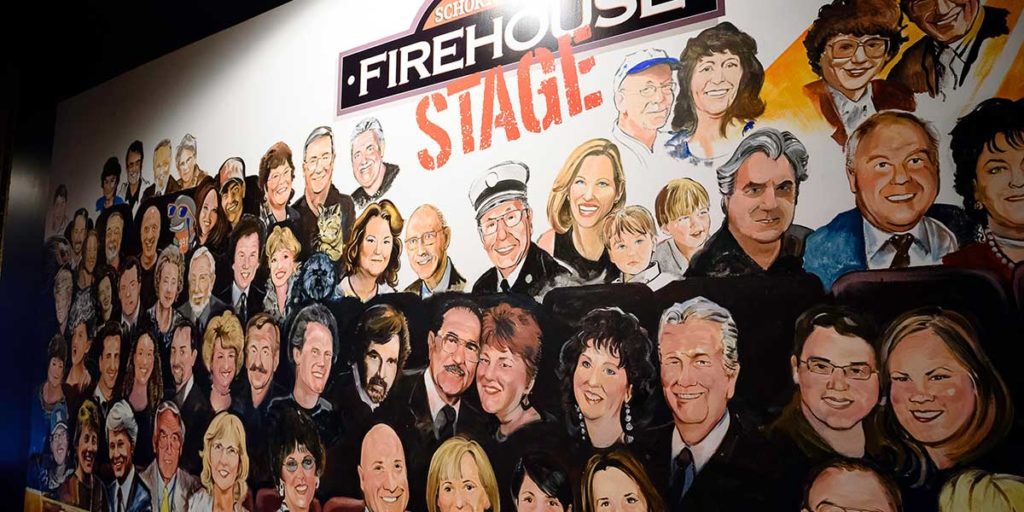
The dusty floors and rusty rebar poking out of holes in the ceiling don’t tell the Goodwill Theatre story. Nor does it tell the Binghamton story.
Because, like Binghamton and neighboring Johnson City, the story is very much in manuscript. There’s the beginning set in the “Valley of Opportunity,” as the area was once known. There’s the “Parlor City” character introduced as prosperity grew for the first half of the 20th century. There’s the antagonistic exit of industry.
Then there’s the rebirth helmed by a new class of creative entrepreneurs and artists. They embrace the fertile soil sown by the forward-thinkers of yesteryear – the innovative forefathers who not only created prosperity, but supported the people that made it possible with plenty of artistic amenities.
The Goodwill Theatre Inc. upholds a remarkable tradition to share the arts with the community, through both performance and programming. While Greater Binghamton has a reputation as a blue-collar town, it’s also a city with a great appreciation for arts and culture.
“Everyone is willing to let things grow. Things don’t stay stagnant here and I think that’s a really important aspect of the community,” Goodwill Theatre CEO Naima Kradjian says. “It may be something that lives a certain life and it’s over – and that’s OK. Because it spawns new activity and new ideas.”
Legendary philanthropist George F. Johnson, co-founder of the Endicott-Johnson Shoe Co. that literally helped build the Triple Cities, had plenty of new ideas in his day. Back in the early 20th century, George F. – as he was popularly known – was redefining what it meant to be an industrialist.
He put an uncommon focus on the well-being of his employees, providing housing, health care and profit sharing to his workforce. Johnson, for whom Johnson City is named, also took cultural needs into consideration.

“A lot of the culture that is here came from immigrants,” Kradjian says. “They came from these rich European cultures and they wanted that same culture here.
“Because [Johnson] was a paternalistic person and he believed in giving back, he began to fund and foster the types of things they wanted,” she says.
The magnificent Goodwill Theatre was just one of those efforts that included public parks and Greater Binghamton’s world-famous carousels. As E-J faded and IBM emerged, the tradition of attracting immigrants and accommodating cultural tastes continued for decades.
“We have a very, very strong, diverse community that came from a lot of cultures that revered the arts,” Kradjian says. “I think that’s what helped make this community open to innovation.
“You had this intersection of interesting people and educated people and the whole community took off,” she says. “That’s that whole spark of innovation that is part of the DNA here – it’s taking something from the past and propelling it into the future.”
Four inventors of early electronics joined forces in 1911 to form what would become International Business Machines (IBM), which was headquartered here. Now credited as a forefather of virtual reality, Henry Link turned his family’s piano and organ business into the first maker of flight simulators.

The artists of Binghamton, Johnson City and Endicott are no less adventurous.
The Triple Cities have become the heartbeat of the arts in New York’s Southern Tier, a reputation that extends to galleries and performances like those you see at the Firehouse Stage.
A former actress and artist in Manhattan, Kradjian came to Greater Binghamton some 30 years ago. She jumped right into the local arts scene as an organizer of “First Night Binghamton.”
“First Night was a way to get to know artists in the community. It opened my eyes to the incredible richness here,” Kradjian says. “I got to work with arts educators, fine artists and performers; bring in outside performers; and inspire local artists to do more.
“That propelled me into seeing what other things were available,” she says.
She built on those connections to found The Goodwill Theatre Inc. The organization had no true home in the beginning, hosting its earliest programs in the parking lot. Eventually, they acquired the dilapidated Goodwill Theatre in a tax sale. Like so many others revitalizing Greater Binghamton, they saw the potential and acted with the support of the community.
Kradjian’s organization is in the midst of a massive renovation of the Goodwill Theatre, a project years in the making. In the meantime, the Firehouse Stage – named for its former function as a civil service – next door is the main performance space.
“We are far enough away from New York, from the critics, to be a safe space. Yet, at the same time we’re close enough to have access to artists from Manhattan, Toronto, Cleveland, Montreal,” Kradjian says. “We get a lot of artists that tour the Northeast. We’re somewhere they can try new things.

“Our goal is for people to come here and see something new and something that is germinating,” she says.
This experimental performance fits nicely with the exceptional amenities Greater Binghamton has in the way of the arts. The Tri-Cities Opera has been a mainstay for more than 70 years. Binghamton is home to its own philharmonic and numerous community theater companies like the Summer Savoyards and SRO Productions.
“There’s something for everyone here,” Kradjian says. “We’re a small town with big-city amenities. “That’s really an amazing combination because you have the natural beauty, the affordability and the safety,” she says. “It’s not a complicated place to visit, yet you have all those things here.”